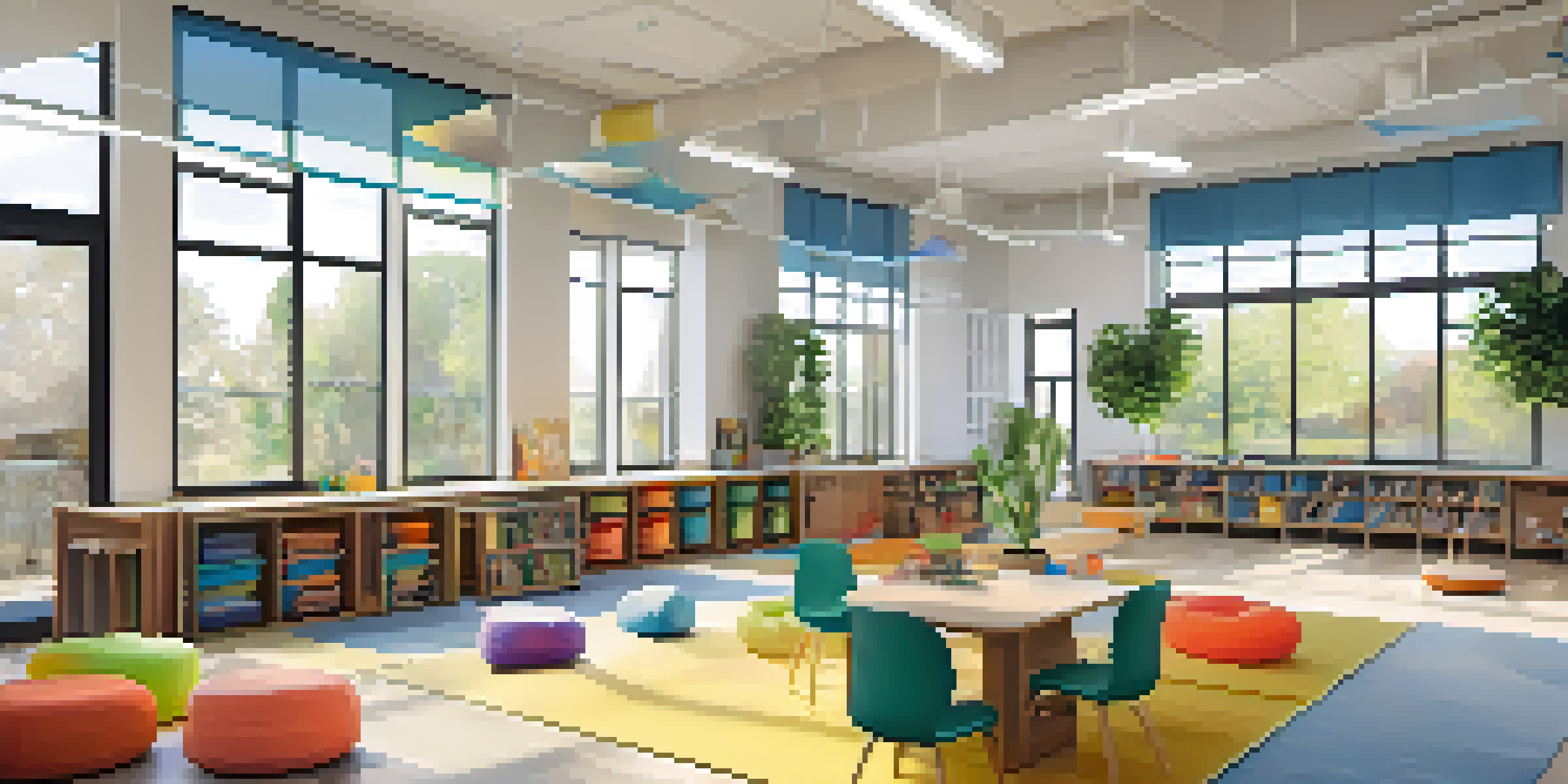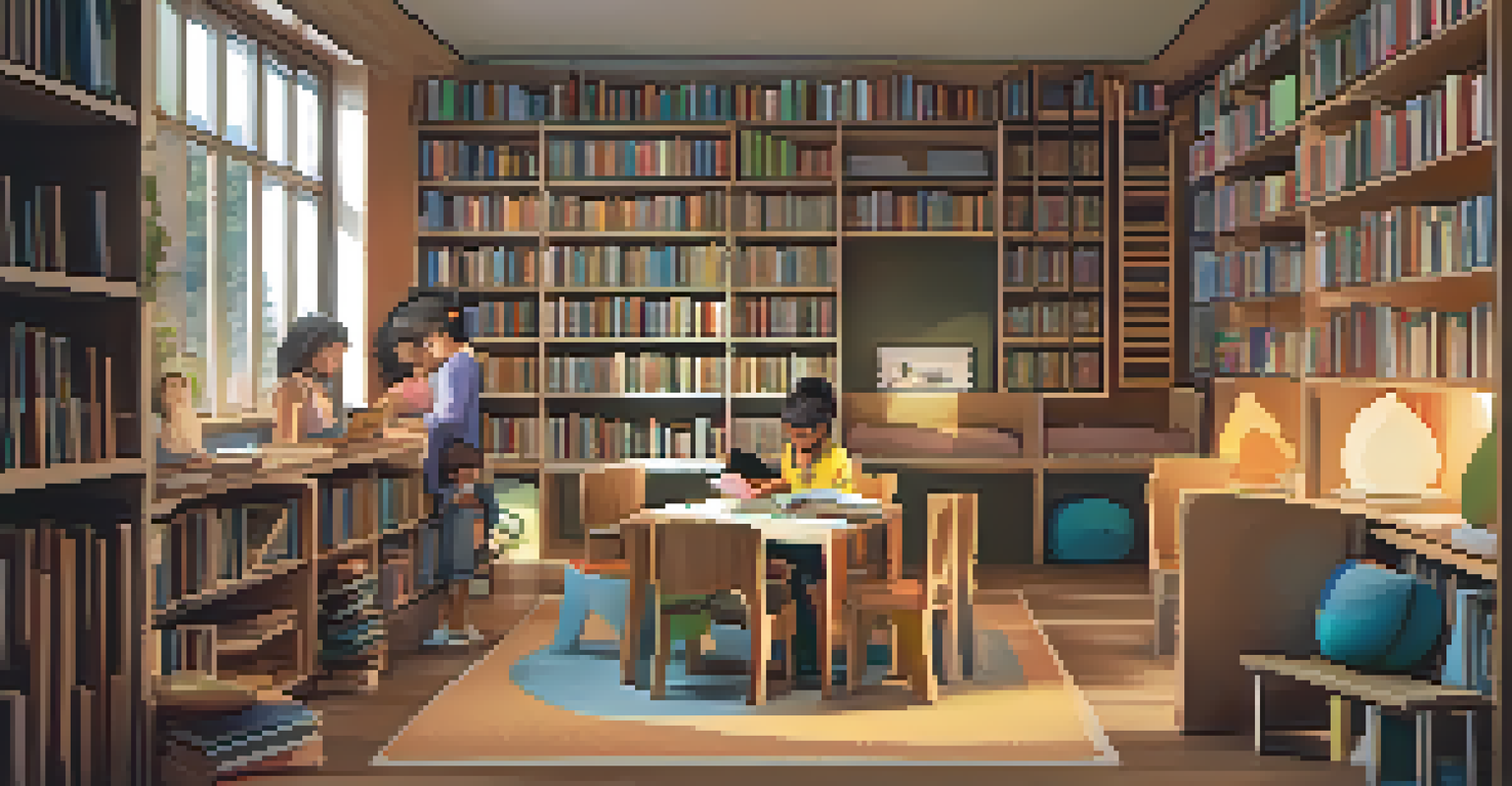The Impact of Environment on Constructivist Learning

Understanding Constructivist Learning in Different Environments
Constructivist learning is a theory that emphasizes the role of learners in building their own understanding and knowledge. It suggests that individuals learn best when they can relate new information to their existing experiences. This approach is heavily influenced by the environment in which learning occurs, as different settings can either facilitate or hinder the learning process.
Learning is an active process. We learn by doing. Only knowledge that is used sticks in your mind.
For instance, a classroom filled with natural light and collaborative spaces can encourage students to engage and interact more freely. In contrast, a traditional, rigid classroom layout may stifle creativity and limit social interaction. Thus, the physical environment plays a crucial role in shaping how learners construct their knowledge.
Moreover, the emotional and social environment also matters greatly. A supportive atmosphere can boost a learner's confidence, encouraging them to take risks and explore new ideas. On the flip side, a negative environment can lead to disengagement and hinder the learning process.
The Role of Physical Space in Learning Outcomes
Physical space encompasses everything from classroom design to the arrangement of furniture. Research has shown that well-organized spaces can enhance student focus and collaboration. For example, flexible seating arrangements allow students to choose where they learn best, which can lead to increased comfort and productivity.

Additionally, incorporating elements like plants or art can make the environment more inviting and stimulating. These touches not only beautify the space but also create a sense of belonging and community among learners. This connection can lead to deeper engagement in the learning process.
Role of Environment in Learning
The physical, emotional, and social environments significantly influence how learners construct knowledge and engage with the material.
Ultimately, a thoughtfully designed physical space can promote active learning, where students are not just passive recipients of information. Instead, they become active participants in their educational journey, fostering a sense of ownership over their learning.
Social Interactions and Constructivist Learning
Constructivist learning thrives on social interactions, as learners often build knowledge through discussions and collaborative activities. When students work together, they share diverse perspectives, challenging each other's ideas and deepening their understanding. This collaborative environment encourages critical thinking and problem-solving skills.
The greatest sign of success for a teacher is to be able to say, 'The children are now working as if I did not exist.'
For example, group projects allow learners to explore topics more comprehensively, as each member brings unique insights to the table. This shared responsibility not only enhances learning but also builds important social skills. It’s in these interactions that students learn to negotiate, compromise, and communicate effectively.
Moreover, the emotional support provided by peers can significantly impact a student's willingness to engage. A positive social environment fosters trust and safety, enabling learners to express their thoughts without fear of judgment. This atmosphere is essential for effective constructivist learning.
Cultural Influences on Constructivist Learning Environments
Cultural context greatly influences how learning is approached and understood. Different cultures may have varying expectations regarding collaboration, communication, and authority in the learning process. Understanding these cultural nuances is vital for creating inclusive learning environments that cater to diverse learners.
For instance, in some cultures, group work is highly valued, while in others, individual achievement might be prioritized. Educators who recognize and respect these differences can better facilitate constructivist learning by adapting their methods accordingly. This adaptability fosters an inclusive environment where all students feel valued and understood.
Collaboration Enhances Understanding
Social interactions and collaborative activities allow learners to share perspectives, fostering critical thinking and deeper insights.
Furthermore, incorporating cultural references and examples into the learning material can make the content more relatable and engaging. By connecting lessons to the students' cultural backgrounds, educators can enhance motivation and relevance, which are key components of effective constructivist learning.
Technology's Impact on Constructivist Learning Environments
In today’s digital age, technology is reshaping the landscape of education. Tools such as interactive whiteboards, educational apps, and online collaboration platforms facilitate constructivist learning by making resources more accessible and engaging. This shift allows students to explore concepts through various multimedia formats, catering to different learning styles.
Moreover, technology enables learners to connect with a broader community beyond the classroom. Virtual discussions and collaborative projects with peers from different regions or countries can enrich the learning experience. This global perspective fosters critical thinking and cultural awareness, both essential in today’s interconnected world.
However, it’s important to recognize that technology should enhance, not replace, interpersonal interactions. Balancing digital tools with face-to-face collaboration is crucial to maintaining the social aspect of constructivist learning, ensuring that learners benefit from both worlds.
The Emotional Environment and Learning Engagement
The emotional environment of a learning space can significantly influence student engagement and motivation. A supportive and positive atmosphere encourages learners to take risks and actively participate in their education. In contrast, a stressful or negative environment can lead to anxiety and disengagement, hindering the learning process.
For example, educators who foster strong relationships with their students create a sense of safety and trust. This emotional connection allows learners to express themselves freely, ask questions, and seek help when needed. When students feel valued and supported, they are more likely to engage deeply with the material.
Technology as a Learning Tool
Technology enhances constructivist learning by providing diverse resources and connecting students globally, while maintaining the importance of interpersonal interactions.
Additionally, incorporating social-emotional learning (SEL) practices can help nurture a positive emotional environment. These practices teach students essential skills such as self-awareness, empathy, and emotional regulation, contributing to a more constructive and collaborative learning experience.
Strategies for Enhancing Constructivist Learning Environments
Creating an effective constructivist learning environment involves intentional planning and implementation of various strategies. Educators can start by designing flexible learning spaces that accommodate different activities, such as group work, independent study, and hands-on projects. This versatility allows for a more dynamic learning experience.
Incorporating real-world problems and scenarios into lessons can also enhance relevance and engagement. By connecting academic content to everyday life, students can see the value of their learning, which motivates them to invest time and effort. This approach encourages critical thinking and problem-solving skills, essential components of constructivist learning.

Lastly, regular reflection and feedback are crucial for continuous improvement. Encouraging students to reflect on their learning experiences helps them identify their strengths and areas for growth. This practice not only promotes metacognition but also empowers learners to take charge of their educational journey.